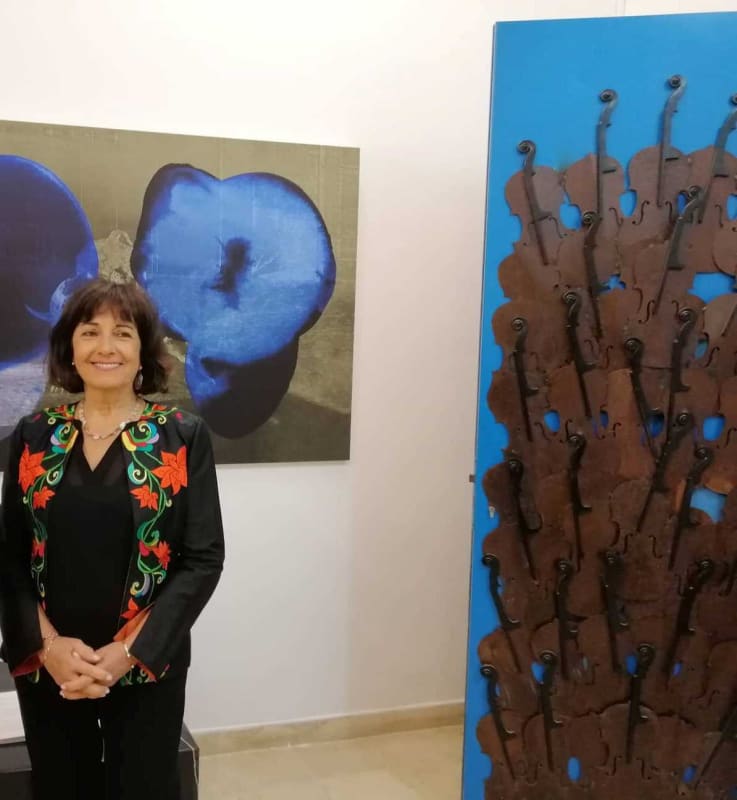Najia was born to a Moroccan father and French mother in 1950 in Paris, where she spent her childhood and teenage years. Her artistic debut occurred in the atmosphere of post – May 68 years that reigned in the French capital: while studying and practising the visual arts and experimental theatre, Mehadji immersed herself in the city`s cultural life that offered – and often combined – world music, visual arts, theatre and performance art. This foundational period of her life resonated with John Cage`s and Peter Brook`s teaching, especially the latter`s living theatre and notion of “ Empty Space ”, that is to say the staging of plays with bare sets, in which the actors interpretation becomes all more crucial. Thanks to book, Mehadji discovered – and subsequently incorporated in her own theatre practise – different cultural inspirations, especially the dance of whirling dervishes, Japanese Noh theatre and Gnawa music. In the 1970`s, she drew from these influences to create charcoal drawings to the rhythm of music, enabling her to explore the interrelation of bodies, rhythm and gesture movement, a theme that she has continued in her painting. Arising from this approach is a constant bodily energy that runs through her work in the form of free yet controlled gesurality. In 1985, in the course of one-year residency in Essaouira funded by the French ministry of culture (“ Villa Medicis hors les murs ”, an off-site Villa medicis scholarship), Najia Mehadji started a series of artworks that paired painting with gluing silk paper on a raw canvases, and the imprint of bodily movements with translucent collage of geometric forms. This series of works centred on the myth of Icarus, and emblematic figure of freedom, and was shown the following year, in 1986 in the exhibitions “ intensités nomades ”, held at the Montpellier`s Fabre Museum in partnership with AWI Museum.
In her recent works, titled Volutes, Mehadji uses fluid paint and large brushes to execute curved lines in singular, sweeping movement that embody the essence of her experiences and thinking, hence Mejhadji`s distinctive and remarkable work – oscillating between painting and drawing and between here and elsewhere – always impress with its vibrant pictorial gesturality that combines the corporal and spiritual.
Her work can be found in numerous collections, including the Institut du Monde Arabe (France), the Fonds National d'Art Contemporain de Paris (France), the Musée d'Art Moderne et Contemporain du Centre Georges Pompidou (France), the Musée d'Art Moderne de Céret (France), the Musée des Beaux-Arts d'Amman (Jordan) and the Musée Mohammed VI d'Art Moderne et Contemporain (Morocco).
